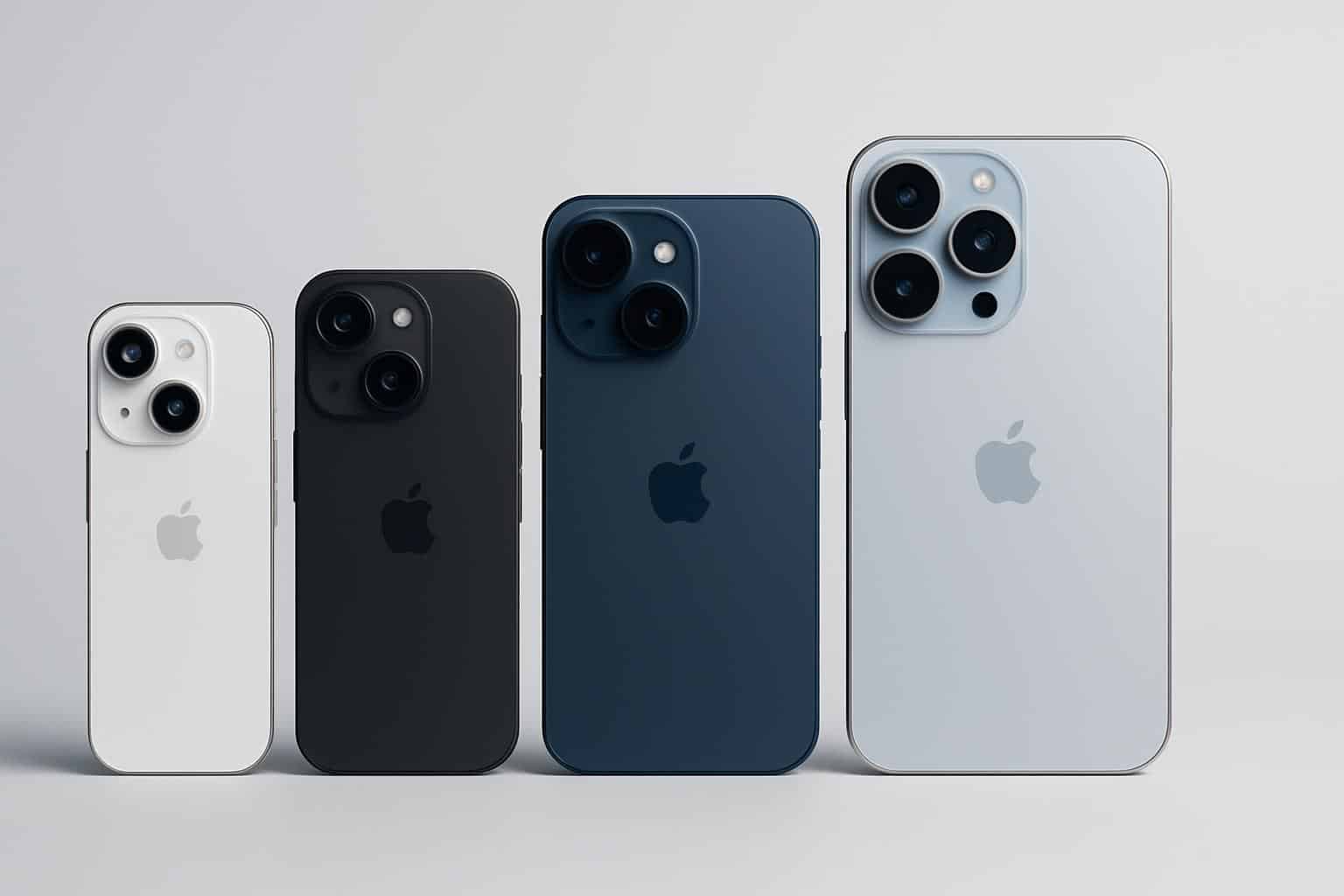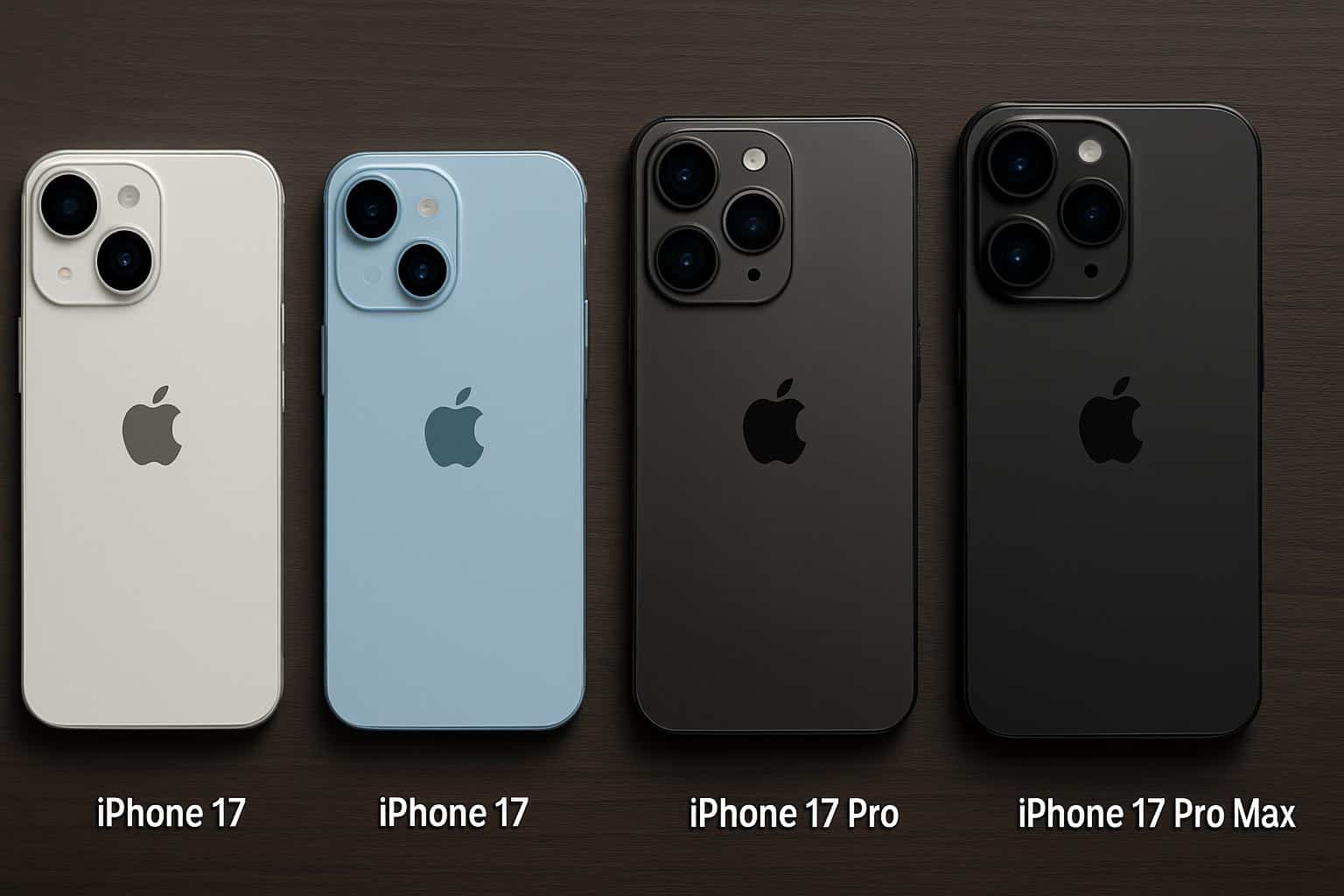Apple’s new iPhone 17 family is not just a refresh of the usual trio. It’s a lineup shuffle, with a new iPhone Air, the expansion of ProMotion to every model, and a rethinking of the Pro chassis for improved thermals. After stacking up the iPhone 17, iPhone Air, 17 Pro, and 17 Pro Max side by side, here is a closer look at how they really compare — and which one is actually the smartest purchase for your wants.
How the four iPhone 17 models truly differ and compare
The baseline experience is pushed further by the iPhone 17’s 120Hz ProMotion display and increased durability through Ceramic Shield 2. The new iPhone Air heads in the opposite direction from “bigger is better,” going for extreme thinness at a slim 5.6mm while simplifying hardware decisions. The 17 Pro duo shift to a new “plateau” design featuring a brushed aluminum unibody and a vapor chamber to stay within the optimal thermal window of the A19 Pro processor. Up and down the line, Apple’s camera pipeline is more capable; the front‑camera field of view is wider and output is sharper, and the displays take a tangible step up in brightness and contrast.
- How the four iPhone 17 models truly differ and compare
- Buy iPhone 17 for best value and smooth 120Hz display
- Buy iPhone Air – If You Like Ultra‑Thin Minimalism
- Buy iPhone 17 Pro For Cameras And Cooler Sustained Speed
- Buy iPhone 17 Pro Max for screen size and peak specs
- Performance, Battery, And Practical Considerations
- Bottom line recommendations for every iPhone 17 buyer

To put this in context, Apple’s own literature talks up the Air’s portability, the value uplift of the base model, and the performance ceiling of the Pros. Independent labs such as DisplayMate and imaging specialists like DxOMark consistently confirm Apple’s display and camera advances each cycle, and early analysis from firms like Counterpoint Research indicates that premium buyers continue to favor the larger “Max” devices — useful framing if you’re stuck choosing between Pro vs. Pro Max.
Buy iPhone 17 for best value and smooth 120Hz display
This is the mainstream choice and the largest “quality of life” bump for non‑Pro users in a decade. ProMotion up to 120Hz makes scrolling buttery, animations pop, and games less blurry at speed — all without having to pay Pro prices. Aided by Ceramic Shield 2 for even better drop and scratch performance, it’s the default recommendation for most people who aren’t looking for design fillips or professional camera requirements from a fast, modern iPhone.
It also retains the familiar outline, thanks to raised camera rings and contoured edges. If you’re moving from an older Pro of similar size, the hand feel is familiar in an instant. The iPhone 17 is the gold standard for students, commuters, and anyone who prioritizes battery balance and silky‑smooth performance over niche features.
Buy iPhone Air – If You Like Ultra‑Thin Minimalism
Thin is in, and at 5.6mm thick, the iPhone Air is the thinnest phone Apple has ever made. It fits into jacket pockets where larger phones print through, and it disappears in a crossbody bag. Even though that’s what it has on the spec sheet, this isn’t some trend‑following, bare‑bones treatment like we’ve seen a few times in recent years; the A19 Pro keeps the fun churning. Apple’s new N1 wireless chip throws support behind Wi‑Fi 7, Bluetooth 6, and, yes, Thread to keep your smart home humming. The C1X modem promises speedy, efficient cellular connectivity.
There are trade‑offs by design. You get one 48MP Fusion rear camera — flexible, with 28mm and 35mm equivalents on board and a decent macro shot — but no zoom. It’s eSIM‑only, too; that’s fine for most big carriers, but anyone who swaps in physical SIMs will need to think ahead. Opt for Air if portability, clean lines, and modern radios are more important than optical zoom or multi‑camera trickery.
Buy iPhone 17 Pro For Cameras And Cooler Sustained Speed
The 17 Pro, whose on‑paper camera specs are only slightly more modest, is the photographer’s and power user’s compact. Elevating your game, three 48MP Fusion cameras and an updated Photonic Engine empower you to a higher level of image quality with more texture in the details, sharpness, and accurate color even if the lighting is not ideal — especially in extreme low light where information loss occurs. A new 48MP telephoto with a bigger sensor brings a little more tele without turning dim indoor shots into mush.
The updated brushed aluminum unibody is weight‑shedding and heat‑dissipating, and a vapor chamber moves de‑ionized water to remove heat from the A19 Pro. Translation: less throttling dips during long bouts of recording in 4K or gaming. Apple also promises up to 39 hours of video playback, thanks in part to the new “plateau” that allows for a larger battery. Want a do‑it‑all Pro that runs cooler and shoots even more consistently? This is the one.

Buy iPhone 17 Pro Max for screen size and peak specs
The Pro Max is the no‑compromise flagship device. Its 6.9‑inch Super Retina XDR display spans wide for reading, clipping, and game views — and Apple rates it as high as 3,000 nits with better outdoor contrast for maps or HDR video that are now easier to see in tinderbox conditions. It still fits ProMotion at up to 120Hz — and the bigger body naturally requires a larger battery, plus the same vapor‑chambered cooling.
Inside, you’ll find the A19 Pro chip with a 6‑core CPU and 6‑core GPU as well as a 16‑core Neural Engine that speeds up on‑device AI tasks and graphics.
It also includes the Air’s N1 wireless chip for Wi‑Fi 7, Bluetooth 6, and Thread that may have the same effect of improving AirDrop reliability. If you gobble up media, edit photos and video on the phone, or simply want the best screen Apple offers, then this is where the Pro Max earns its place.
Performance, Battery, And Practical Considerations
All four models get a lift from Apple’s recent energy efficiency and tougher glass. The most day‑to‑day differences are in sustained workloads and camera flexibility: the Pros maintain peak performance for longer periods, plus give you a true telephoto; the Air is the easiest to slip into a pocket or light bag. The entry iPhone 17 comes in between, finally bringing 120Hz where most people need it.
Travelers should be aware of the Air’s eSIM‑only approach: although you can now use an eSIM with most major carriers in the U.S. and Europe, double‑check your destination’s options before takeoff. If you use optical zoom frequently on your phone for events or wildlife, the Pro models’ telephoto is worth the extra cost; if most of your photography consists of people, pets, and food (perspectives where even a 48‑megapixel sensor should be sufficient to show detail), what Air and iPhone 17 offer will more than suffice.
Bottom line recommendations for every iPhone 17 buyer
Choose the iPhone 17 if you’re looking for the best value with a truly superior 120Hz display. Opt for the iPhone Air when slimness and contemporary wireless are most important, and you can get by without telephoto or a physical SIM. Make the leap to iPhone 17 Pro if you are a camera pro and need a size that fits your hand, has amazing cameras, and sustained performance. Go iPhone 17 Pro Max if you want the most screen and Apple’s richest feature set.
The short version: most people should buy iPhone 17; creators and gamers should go for 17 Pro; maximalists and media hounds will be all over the 17 Pro Max; minimalists who value portability as much as performance will reach not for a Pixel or dummy phone but rather the Air.

